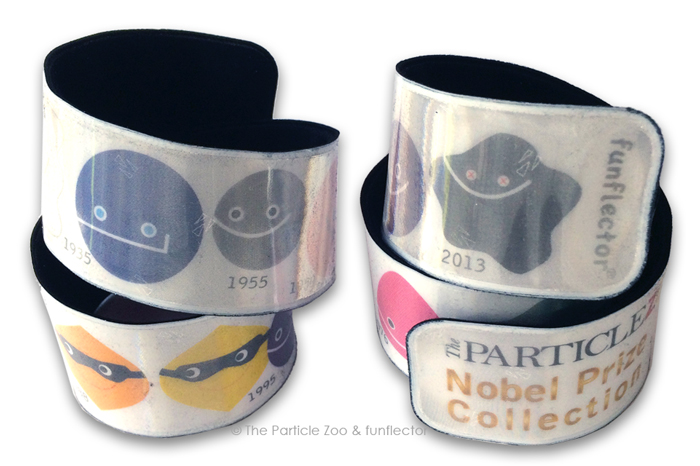For our fellow science nerds around the world, we teamed up with The Particle Zoo and designed an ultra-reflective slap bracelet with elementary particles related to the Nobel Prize in physics. Order it in here webshop, or in our German webshop. In our previous blog post, we discussed the significance of the Photon (1921), the Neutron (1935) and the Electron magnetic moment (1955). That means we are up to the antiproton!

1959 – The Antiproton
Emilio Gino Segrè and Owen Chamberlain
“for their discovery of the antiproton”. An antiparticle is a “mirror image twin” of the particle and Paul Dirac’s theory predicted every particle has its antiparticle. The positron, the antiparticle of the electron, had been discovered in 1932 but the creation of the antiproton, required a more powerful machine followed by new techniques to detect and measure the result. They announced the discovery of the antiproton in 1955. Read more here> and here>.
1976 – The Charm Quark
Burton Richter and Samuel Chao Chung Ting shared the Nobel Prize
“for their pioneering work in the discovery of a heavy elementary particle of a new kind”. The heavy particle detected in their two independent experiments in 1974, was J/psi. The ever increasing number of baryons (3-quark particles) and mesons (quark-antiquark particles) hinted at smaller building blocks and Gell-Mann’s quark theory predicted the charm quark. The discovery of the J/psi, a charm-anticharm meson, was not only the first sign of the charm quark, but also sealed the deal for the quark model.

1984 – The W and Z Bosons
Carlo Rubbia’s and Simon van der Meer’s Nobel Prize in physics “for their decisive contributions to the large project, which led to the discovery of the field particles W and Z, communicators of weak interaction” is a celebration of creative engineering as much as the advancement of science. The W and Z bosons are particles that carry the weak force, which plays a role in radioactive decays. They are similar to the photon, which carries the electromagnetic force. Their discovery confirmed the “Standard Model”, a theory which unifies the weak and the electromagnetic forces. Read more about the technical challenges and discovery of the vector bosons of the weak interactions >
Continue to the next Nobel Prize: The Muon Neutrino in 1988 and on…

